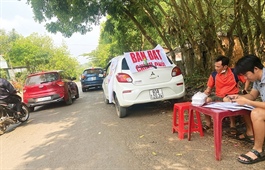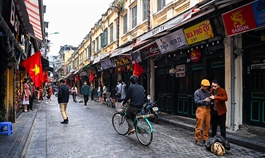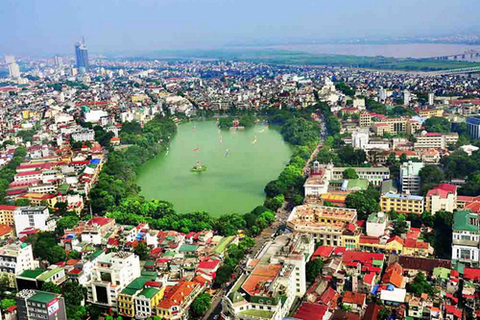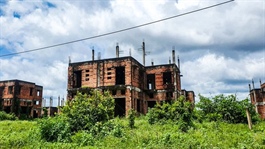Land hikes reach Can Gio Island
Land hikes reach Can Gio Island
After a similar phenomenon in Hoc Mon and Cu Chi districts in the outskirts of Ho Chi Minh City, land price hikes are becoming more prevalent on Can Gio Island – the only district of Ho Chi Minh City with a 23km coastal line.
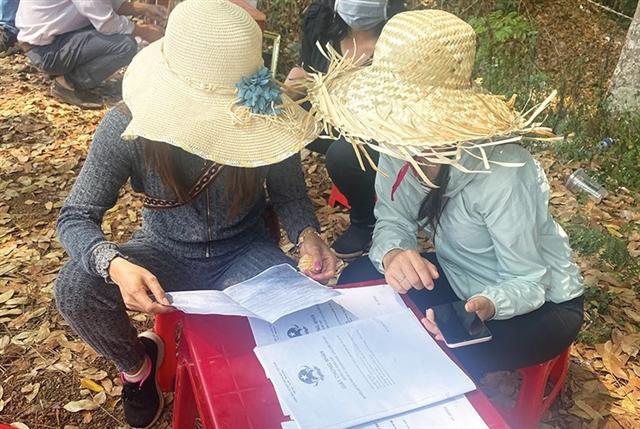
Land hikes reach Can Gio Island
|
Can Gio has experienced many land price increases during the last ten years after the Binh Khanh bridge project was initiated to connect the district with Ho Chi Minh City and replace the Binh Khanh ferry.
Land fever resumed after Ho Chi Minh City People’s Committee in February signed four decisions to approve a detailed plan of sub-regions in the Can Gio Tourist and Urban Development Complex.
With the total investment of $9.3 billion from Vingroup, this complex is focused on coastal urban development, tourism resorts, and smart cities. A sub-project of this complex located in a 300-hectare plot of land was reserved for financial and economic centres, office buildings, a port, and a high-end resource and urban area.
The project was initially announced in 2000, at a scale of 600ha, managed by Saigon Tourist’s Can Gio Tourist City. After acquiring a 97-per-cent stake in the unit in 2016, Vingroup proposed scaling up the project to 2,870ha and assigned its Vinhomes unit to participate in the development.
In addition to this movement, Ho Chi Minh City People’s Committee proposed to reserve VND96 trillion ($4.17 billion) to invest in 15 key transport projects of the whole city, including Binh Khanh Bridge.
The ferry linking Can Gio and Vung Tau was put into operation this January and has helped to reduce the travelling time to 30 minutes, saving around three hours compared to using inland roads.
In 2020 land prices in Can Thanh commune were traded from around $300 to $950 per square metre, depending on the location – an increase of about 50 per cent over the same period in 2019.
Land plots on Duyen Hai road, linking Can Thanh park to Rung Sac square were quoted from $870 to $1,300 per sq.m.
Land plots in Can Thanh commune’s streets such as Dang Van Kieu, Tac Suat, and Duyen Hai had increased around 200 per cent compared to the previous year.
However property experts also warned that buyers should be careful about increasing land prices on Can Gio.
There were almost no businesses on Can Gio, with the area being deemed exceedingly difficult to develop despite its close proximity to Ho Chi Minh City itself.
Apart from Vingroup’s complex, La Maison De Can Gio is now invested in by Phuoc Loc Housing. The owner of a semi-detached house at this project told VIR that he wanted to sell the house at a price of $1,480 per sq.m. “I quoted this price because I need to get my investment back. But I will not sell it if I can manage the finances,” he said.
Meanwhile Nguyen Van Ba, another land owner in Long Hoa commune, said that the more buyers appear, the better it is.
“As the bridge is going to be ready soon, Vingroup’s project is also going to commence. Land prices will increase much more compared to the current rate. I will be patient and wait for the upcoming increase,” Ba said.
Talking with VIR, Cao Huu Phi, general director of COPiHOME, said that almost all land buyers now are aiming for land plots before further infrastructure is added.
“Whenever the infrastructure is improved – including the bridge – a range of large-scale projects will be commenced and the market will become hotter,” Phi said.
Meanwhile Nguyen Van Hau, CEO of Asian Holding said, “Buying plots before large-scale projects and infrastructure are planned is like a double-edged sword. Buyers and investors will have high profit as they had bought land with low prices and can re-sell it with much higher rates. On the contrary, they can suffer heavy losses, especially those investors who use loans,” said Hau.



